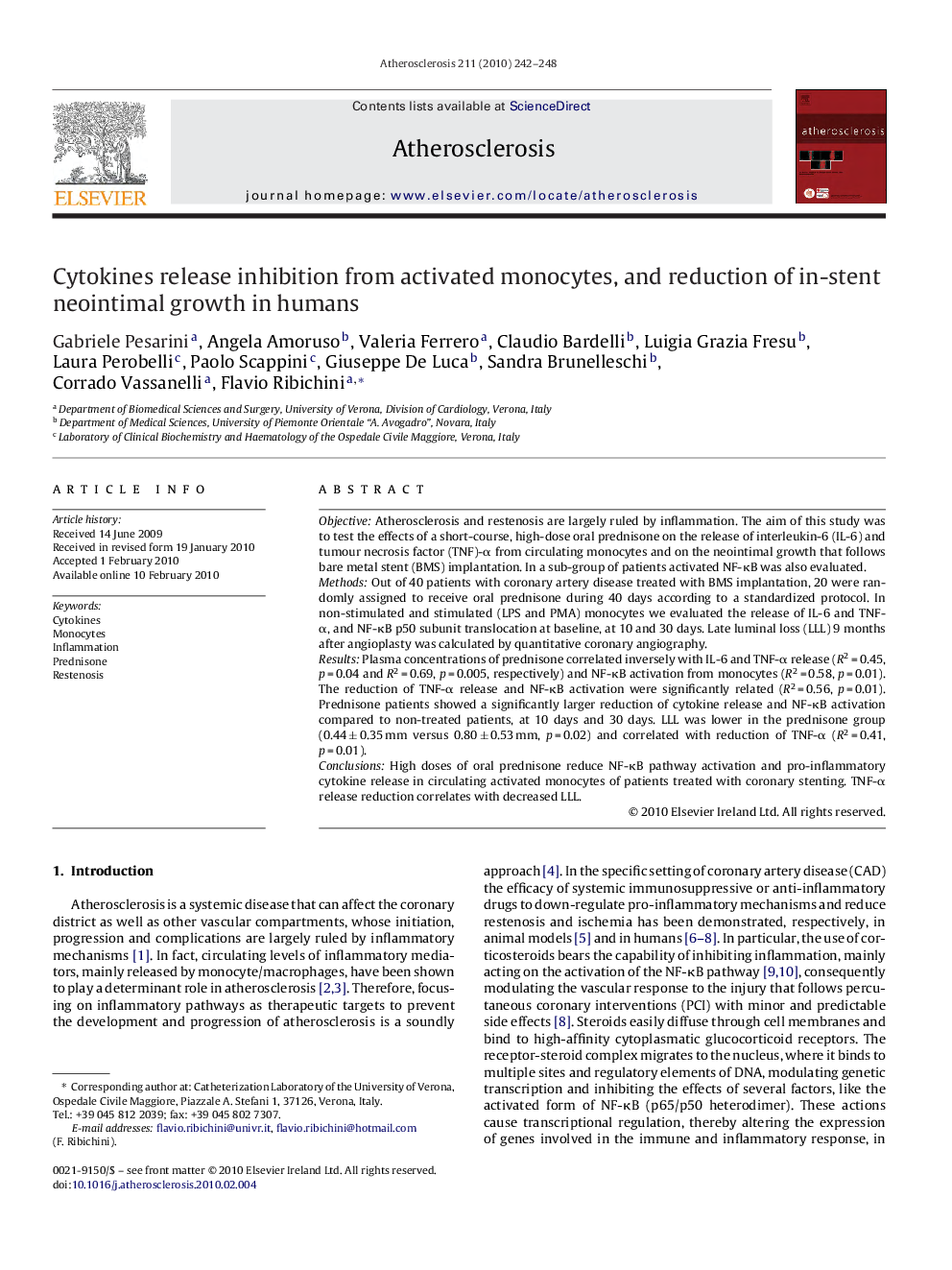| Article ID | Journal | Published Year | Pages | File Type |
|---|---|---|---|---|
| 5950334 | Atherosclerosis | 2010 | 7 Pages |
ObjectiveAtherosclerosis and restenosis are largely ruled by inflammation. The aim of this study was to test the effects of a short-course, high-dose oral prednisone on the release of interleukin-6 (IL-6) and tumour necrosis factor (TNF)-α from circulating monocytes and on the neointimal growth that follows bare metal stent (BMS) implantation. In a sub-group of patients activated NF-κB was also evaluated.MethodsOut of 40 patients with coronary artery disease treated with BMS implantation, 20 were randomly assigned to receive oral prednisone during 40 days according to a standardized protocol. In non-stimulated and stimulated (LPS and PMA) monocytes we evaluated the release of IL-6 and TNF-α, and NF-κB p50 subunit translocation at baseline, at 10 and 30 days. Late luminal loss (LLL) 9 months after angioplasty was calculated by quantitative coronary angiography.ResultsPlasma concentrations of prednisone correlated inversely with IL-6 and TNF-α release (R2 = 0.45, p = 0.04 and R2 = 0.69, p = 0.005, respectively) and NF-κB activation from monocytes (R2 = 0.58, p = 0.01). The reduction of TNF-α release and NF-κB activation were significantly related (R2 = 0.56, p = 0.01). Prednisone patients showed a significantly larger reduction of cytokine release and NF-κB activation compared to non-treated patients, at 10 days and 30 days. LLL was lower in the prednisone group (0.44 ± 0.35 mm versus 0.80 ± 0.53 mm, p = 0.02) and correlated with reduction of TNF-α (R2 = 0.41, p = 0.01).ConclusionsHigh doses of oral prednisone reduce NF-κB pathway activation and pro-inflammatory cytokine release in circulating activated monocytes of patients treated with coronary stenting. TNF-α release reduction correlates with decreased LLL.
